Performance is not only determined by the number of function calls and the number of calculations inside each call, but also by what you pay - time-wise - for pushing ever more on the stack due to the recursive algorithm. I do not know how that stack-pushing performs but it is likely that it starts to increase more rapidly after a certain threshold. So, you'll have to find out where this threshold kicks in and fit (exponentially or whatever) both below and above (and maybe there are more similar performance penalties when you start to build up the recursive-stack).
Obviously - although that's not in the question - fibonacci numbers shouldn't be computed in a recursive way, even though that's mathematically elegant and requires the most simple code.
[ADDED/EDITED]
I noticed that you have added a graph of time measurements. To get better insight, I suggest to use a LOGARITHMIC scale vertically (times). This will show more clearly whether the whole graph is "purely" exponential - a straight line on a logarithmic plot - or whether it is rather a sequence of (different) exponentials or yet something else. Possibly, the exponential part starts "somewhere", or changes into another exponential.

